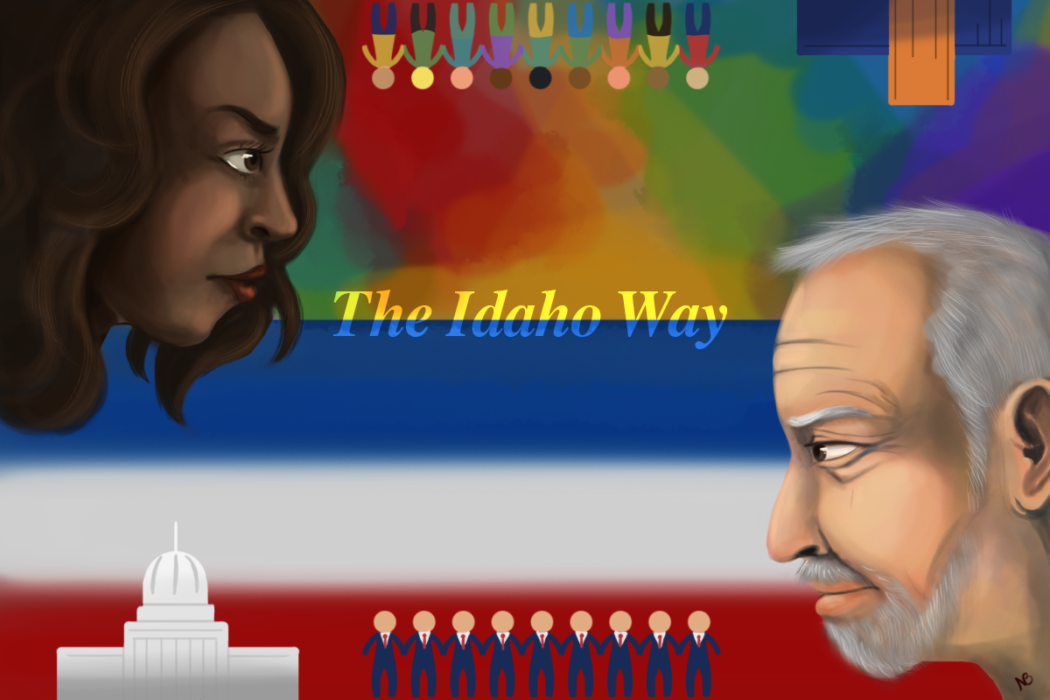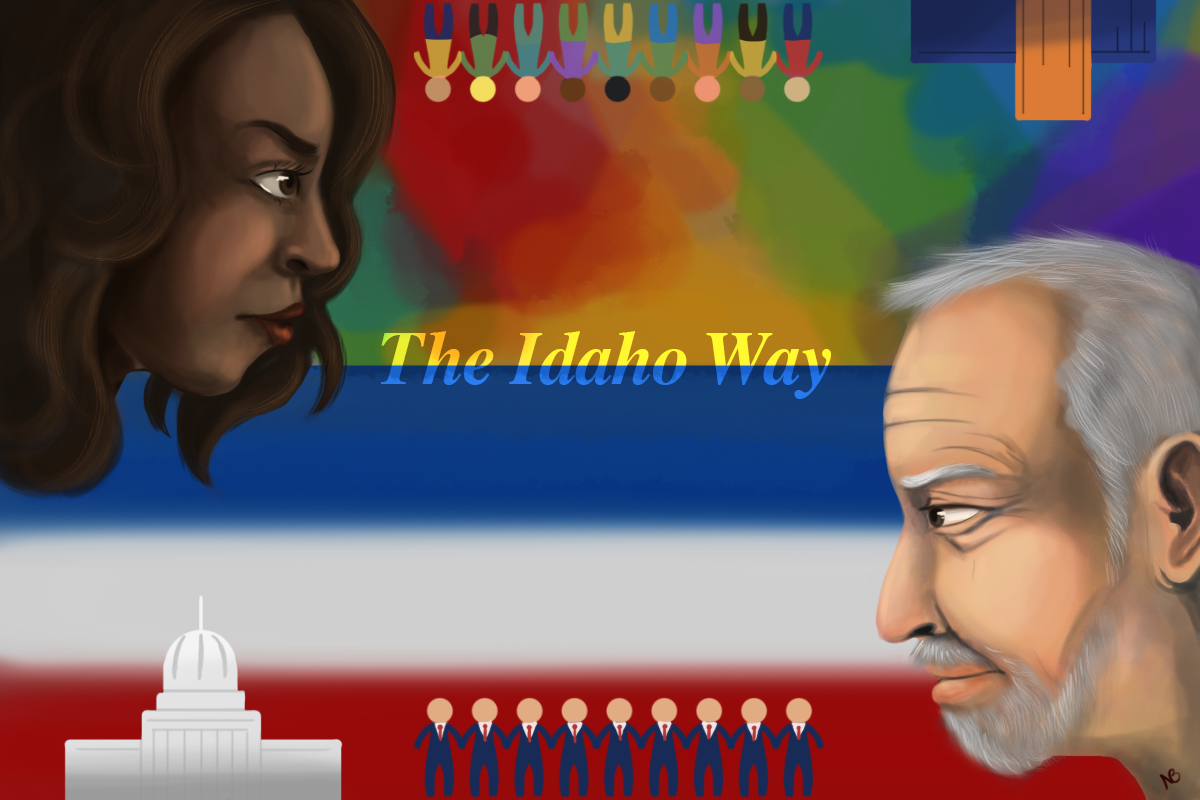
Sociology major Lydia Hernandez hoped to spend the summer relaxing before classes start again at Boise State University, Idaho’s largest public university. Instead, she penned a statement and spoke at a student-organized rally in response to a letter from 28 Republican lawmakers urging Marlene Tromp, BSU’s new president, to shut down the institution’s diversity and inclusion initiatives.
“When I read it, I was angry because it … validated what I already knew, that we were always going to be put aside as students of color,” said Hernandez, who serves in student government as vice president for inclusive excellence.
The letter, sent to Tromp on July 9, took issue with multicultural student events such as a powwow, graduation ceremonies for African American and LGBTQ students, graduate fellowships for underrepresented minority students, a gender-based violence response team, and revisions to the university’s search committee protocol that addressed implicit bias in hiring decisions. Authored by state Representative Barbara Ehardt, the letter described these initiatives as driving up costs for students and “antithetical to the Idaho way.”
The letter has sparked a debate over the role of diversity and inclusion programs in an overwhelmingly white state that, like the rest of the West, is looking at a more diverse future — and has many questioning, what, exactly, “the Idaho way” means.
Hernandez and other Boise State students felt attacked by state lawmakers for “making space for ourselves in a [higher education] space that ultimately wasn’t created for us.”
The state politicians who sent the letter have a different perspective. “This drive to create a diversified and inclusive culture becomes divisive and exclusionary because it separates and segregates students,” Ehardt wrote.
But UCLA education professor Mitchell Chang said that research on affirmative action and race-conscious admissions policies has shown that white students also benefit from diversity initiatives, especially in terms of exposure to different cultural perspectives.
“Students who are members of more racially diverse student bodies see added value to their education in terms of becoming more satisfied with college, feeling like they’re better prepared for society, being more likely to be civically engaged after graduation … and being active members of their communities,” Chang said. “The accusation that these programs create greater separation disregards the history that these underrepresented students were already separated to begin with.”
Tromp, who started as BSU’s president just eight days before the letter was sent, issued a statement saying she would be meeting with Representative Ehardt, but implied that efforts promoting diversity were important. “Public universities must foster and protect the open exchange of ideas in order to ensure a broad and deep educational experience. Boise State is honored to carry forward this critical charge.”
The Idaho Republicans’ letter highlights the fact that predominantly white states like Idaho are grappling with the reality of changing student demographics as more and more students of color enroll in higher education (a trend that reflects younger generations as a whole). Ninety-three percent of Idaho’s almost 1.8 million residents identify as white, according to 2018 estimates from the U.S. Census Bureau. Universities are also under pressure to grow enrollment, especially with out-of-state and international students who pay non-resident tuition, as state funding for higher education has dipped since the Great Recession.
All three of Idaho’s public universities are overwhelmingly white, though more diverse than the state as a whole. The largest minority group are Hispanic students, who make up between 10 and 13 percent of undergraduate students at University of Idaho, Idaho State University, and BSU, according to the institutions’ common data sets for the 2018-19 school year. Asian/Pacific Islander and American Indian/Native Alaskan students account for less than 2 percent. Black students make up closer to 1 percent of undergraduates on the three campuses.
The idea that diversity initiatives are divisive is built on the assumption that all students start from the same place, rather than “assessing where individuals are based on their lived experiences,” said Sydney Freeman, Jr., an associate professor of education at UI. Most processes and policies in higher education are based on white norms, he said. “I’m African American. The University of Idaho was not founded and created to support black men with dreads.”
Freeman added that “the people that are pushing for this particular type of Idaho way” fail to understand experiences like his. At the University of Idaho, only 13 percent of faculty members are people of color. Freeman said that he’s often the first black professor that many of his students have had. “Ever,” he added for emphasis.
Hernandez experienced a similar disconnect as a student of color at Boise State. She hasn’t seen herself reflected in the curriculum or in the faculty and staff at her university. “Idaho is a very white, red state. So coming to Boise State, you can see that,” she said.
While the letter specifically addressed Boise State University, similar inclusion programs exist at the University of Idaho and Idaho State University. When asked if there were any plans for the legislature to look more closely at those programs, Ehardt wrote in an email that “if it is perceived that there are political or social agendas that are serving to divide our students, then I’m sure those will be questioned.”
Freeman posited that the lawmakers behind the letter may be worried about a future Idaho that doesn’t look just like it does now, that the “Idaho way” referenced in the letter is tied, in part, to the state’s relative homogeneity. Changing demographics, he said, can be threatening to some people.
“What people find objectionable now is that the empowerment of these so-called underrepresented students or minority students really threatens majority students who never really had to question their own privilege,” Chang added.
This is not the first time a state legislature has expressed concern with university initiatives focused on diversity and inclusion. In 2017, Arizona state lawmakers introduced a bill that would have prevented state colleges from offering any class or activity that promotes “division, resentment or social justice toward a race, gender, religion, political affiliation, social class or other class of people.” The proposed legislation failed quickly, but the idea behind it was similar to that being expressed by the Idaho lawmakers: that curriculum examining race and racism is divisive.
Idaho House Majority Leader Mike Moyle, who signed Ehardt’s letter, indicated that Republican lawmakers will likely introduce a bill to address concerns about Boise State’s diversity programs during the next legislative session, but provided no details as to what that might look like. This week, the Idaho Statesman published emails indicating Republicans will pursue legislation that bars undocumented students protected under the Deferred Action for Childhood Arrivals program from receiving certain scholarships — a situation similar to what DACA students in Arizona face.
At a town hall meeting at the end of July, Moyle reiterated his belief that all students should be treated the same with a metaphor. “I’ve got red cattle out there, I’ve got black cattle out there. … It doesn’t matter, they’re all cattle,” Moyle said, according to the Twin Falls Times-News.
House Minority leader Mat Erpelding, who drafted a response to the original letter on behalf of all 21 Democrats in the Idaho legislature, said in an email that “micromanaging the university system will impact our state’s reputation and ultimately stymie our economic growth.” Erpelding told Bitterroot that the Republicans see these types of diversity and inclusion programs as unnecessary, so they don’t want to pay for them. “They’re using [these programs] to justify the fact that tuition continues to go up and the state’s investment in higher ed as a function of the overall overhead for colleges and universities has gone down.”
For her part, Hernandez said the controversy has given new impetus to her own commitment to diversity and inclusion on campus. “I think it’s going to just create an even bigger motivational push for these underrepresented, marginalized students who constantly face these criticisms every day for their identity, for the way they dress, the way they speak,” she said. “It kind of proves … why you need these organizations in the first place.”

